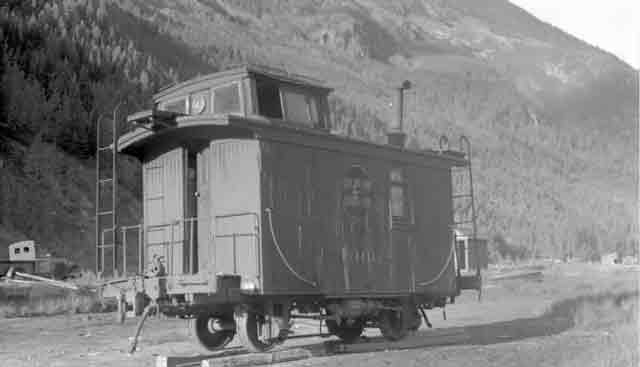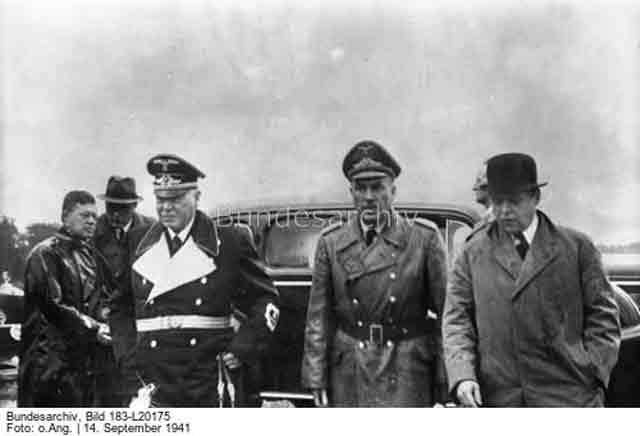Sunday 14 September 1941
 |
| Soviet bombers attacked the military port facility in Helsinki on September 14, 1941. The raid caused this explosion. |
Halder notes that the army has an "average actual strength" of 3.4 million men. Naturally, with an army that large, a large proportion of the army is devoted to logistical support and is not on the front lines.
Halder sets forth figures for the entire army:
- 11,125 officers and 328,713 others wounded
- 4,396 officers and 93,625 others killed
- 387 officers and 21,265 others missing.
- 15,908 officers and 443,603 others
- A total of 459,511 total casualties.
 |
| A Denver caboose train car, 14 September 1941 (Otto Perry, Denver Public Library). |
- Third Armored Division 20% fit and 80% lost/under repair
- Fourth Armored Division 29% fit and 71% lost/under repair
- Seventeenth Armored Division 21% fit and 79% lost/under repair
- Eighteenth Armored Division 31% fit and 69% lost/under repair
There are some indications that the enemy might be passing to the defensive on the entire front. His aggressive effort on the central front has markedly decreased, but we have no evidence that he is moving elements out of the line to shift them to the south.The casualty figures are not alarming at first glance. Operation Barbarossa has been going on for almost three months, and one must expect losses in a hard-fought campaign. However, this was supposed to be an easy campaign, a "kick the rotten door in and take over" campaign as Hitler said. It is not turning out that way.
 |
| Several Royal Canadian Air Force Band members in Halifax, September 14, 1941 (Canadian Museum of Immigration). |
Looking at the details also shows some warning signs. It may accurately be said that the German panzer divisions are the greatest offensive weapon in the world. However, while the front-line forces of the Heer are broad, they are not deep. The Germans have their best forces at the front and maintain few reserves. A loss of efficiency of the panzer arm inevitably must slow the entire German offensive. General Guderian's have lost about 75% of their effective strength and their most important battles remain to be fought.
For what was supposed to be a quick and easy campaign, the Eastern Front is turning into an endless quagmire.
 |
| On 14 September 1941, Reich Minister Dr. Dorpmüller, Reich Minister Todt, and the Danish Minister of Public Works Gunnar Larsen attend a groundbreaking ceremony for a new bridge over the Fehmarn Sound in Denmark. It is the "Vogelfluglinie." Due to the war and subsequent political divisions, the Vogelfluglinie will not be completed until 1963. (Federal Archive Figure 183-L20175). |
September 1941
September 1, 1941: Two Years In
September 2, 1941: Germans Pushed Back at Yelnya
September 3, 1941: FDR Refuses to Meet with Japanese
September 4, 1941: Hitler Furious at Guderian
September 5, 1941: Germans Evacuate Yelnya
September 6, 1941: Japan Prepares for War
September 7, 1941: Hitler Orders Drive on Moscow
September 8, 1941: Leningrad Cut Off
September 9, 1941: Germans Attack Leningrad
September 10, 1941: Guderian Busts Loose
September 11, 1941: Convoy SC-42 Destruction
September 12, 1941: Starve Leningrad!
September 13, 1941: Zhukov at Leningrad
September 14, 1941: Germany's Growing Casualties
September 15, 1941: Sorge Warns Stalin Again
September 16, 1941: Soviets Encircled at Kiev
September 17, 1941: Iran Conquest Completed
September 18, 1941: Focke-Wulf Fw 190 in Action
September 19, 1941: Germans Take Kiev
September 20, 1941: Death at Kiev
September 21, 1941: Raging Soviet Paranoia
September 22, 1941: Defense of Nickel Mines
September 23, 1941: Air Attacks on Leningrad
September 24, 1941: Japanese Spying Intensifies
September 25, 1941: Manstein at the Crimea
September 26, 1941: Kiev Pocket Eliminated
September 27, 1941: Massacre at Eišiškės
September 28, 1941: Ted Williams Hits .400
September 29, 1941: Babi Yar Massacre
September 30, 1941: Operation Typhoon Begins
2020

No comments:
Post a Comment